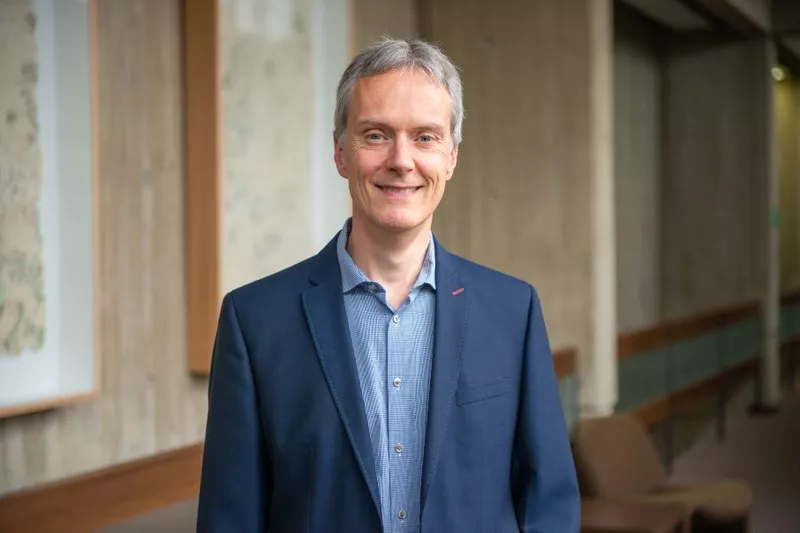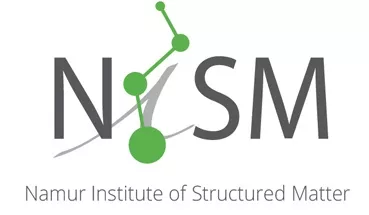Despite the rapid development of dental devices (implants, bridges, crowns) over the past 40 years, several complications still occur, such as poor integration of the dental implant into the bone (osseointegration) or infections affecting about 20% of patients, leading to implant failure. In addition, the formation of bacterial biofilms on the surface of implants increases the risk of inflammation, which can lead to bone loss. The aim of this project is to improve the clinical performance of titanium dental implants by designing, developing and validating new multifunctional layers, which will be both antibacterial and able to promote the formation of healthy bone tissue (osteoinductive).
"The originality of the proposed approach is that the coatings on the titanium implants will be deposited by a plasma process, an ionised gas," explains Professor Laurent Houssiau. "Titanium was selected mainly for its recognised biocompatibility with cells and tissues, but also for its mechanical properties, similar to bone. The upper part of the implant (the abutment) will be covered at Laval University with a hard carbon layer containing zinc oxide to guarantee long-term antibacterial effectiveness. The lower part of the implant (the screw) will be coated at the University of Namur with an innovative layer also deposited by plasma, with a variable concentration obtained by progressively modifying the plasma parameters during the deposition. This is known as a "composition gradient layer".
Thus, a compact titanium oxide coating will be deposited on the screw and its composition will gradually evolve towards a porous, carbon-rich coating on the surface of the treated implant, which will be in contact with the bone," he continues. "In addition, antibacterial zinc oxide will be co-deposited to ensure a short to medium term effect. These gradient layers will therefore allow for a smooth transition between the titanium and the bone, thus improving the osseointegration of the implant while avoiding infections. An important part of the project will be devoted to the biological validation, through in vitro studies, of the biocompatibility, antibacterial activity and osseointegration of the deposits. These biological characterisations will make it possible to guide the optimisation phase of the deposit, through constant feedback,' he says.
This project will therefore enable the development of innovative and biocompatible antibacterial coatings with mechanical properties, stability, hardness and elasticity capable of supporting the elastic loads of implantation and mastication.
The multidisciplinary teams involved
The research consortium consists of the teams of the two project promoters, reinforced by the two teams of co-investigators.
The Quebec promoter of the project is Prof. Diego Mantovani, director of the Biomaterials and Bioengineering Laboratory (LBB) at Laval University (Quebec). He is a specialist in materials science, focusing on the study, application and modification of material properties for implants for the replacement and regeneration of diseased tissue. His scientific interests include the interaction between the surface of materials and the biological environment and the modification of surface properties by plasma treatment.
The Walloon promoter of the project is Prof. Laurent Houssiau, member of the NISM Institute and director of the LISE research unit at the University of Namur. He is also a specialist in materials science, with a particular focus on the study of surfaces and interfaces of materials. He is an expert in surface characterisation techniques using ions and electrons, providing information on the composition and structure of matter at the nanometre scale (billionth of a metre). He also specialises in plasma deposition techniques and will develop the novel approach of compositional gradient layers. His group has been collaborating with Diego Mantovani's LBB for over ten years.
The Groupe de recherche en écologie buccale at Laval University, Faculty of Dentistry, specialises in antimicrobial activity testing and the development of new therapies for oral tissue pathologies. The laboratory has the necessary equipment for bacterial growth under in vitro conditions. Vanessa Houde is the principal investigator associated with the project.
Finally, the Namur Nanosafety Center of the NARILIS Institute of the University of Namur is a research centre that aims to develop applied and fundamental research in the fields of therapeutics and nanotoxicology. The group has a strong background in the toxicology of nanoparticles and nanocoatings, such as those that will be produced in this project. The principal investigators associated with the project are Dr. Julie Laloy and Prof. Jean-Michel Dogné.
Express CV
Laurent Houssiau is a civil engineer and physicist with a doctorate in applied sciences. He was appointed lecturer at the University of Namur in 2000 and became a full professor in 2010. He specialises in the characterisation of surfaces and interfaces of materials, using ionic and electronic spectrometry applied to all types of materials, from semiconductors to biological tissue. His other field of research is the deposition of thin layers of polymers, oxides or nanoparticles by plasma.
Laurent Houssiau holds 9 teaching units in 3 faculties (sciences, medicine and economics and management). He is currently head of the physics department for the third time and was vice-president and then president of the NISM Institute. In addition to his main activities at the university, Laurent Houssiau is involved in the fight against global warming through conferences for the general public and his teaching of the climatology course.

